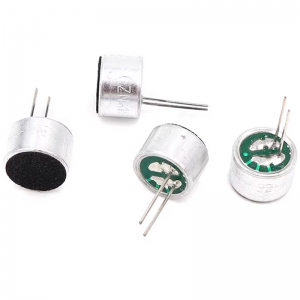
Lavalier Microphone, also known as collar microphone or neck mounted microphone, is a small, portable microphone typically designed to be worn by the user, such as clipped onto a collar, tie, or pocket. Mic microphones are widely used in television production, video recording, speeches, stage performances, and real-time broadcasting due to their concealment and convenience.
characteristic:
Compact and lightweight: The microphone has a small volume, light weight, and is easy to hide and carry, without causing any burden to the user.
Concealed: Due to its compact design, the microphone can be well hidden under clothing without affecting the visual effect.
Wireless transmission: Many microphone microphones use wireless transmission technology to transmit sound signals to receivers through wireless transmitters, increasing the user's freedom of movement.
Directionality: Mic microphones typically have omnidirectional or heart-shaped directionality, which can capture sound within a certain range and reduce background noise.
Structural composition:
The basic structure of a microphone head includes:
Microphone head: The part responsible for capturing sound, usually a small sensor, such as a capacitive or dynamic microphone.
Cable: A wire that connects the microphone head to the transmitter or audio interface, and some cables have built-in noise reduction circuits.
Clip or magnetic suction: used to secure the microphone to clothing, clip is the most common method of fixation, while magnetic suction provides more convenient installation and disassembly.
Emitter (wireless model): If it is a wired microphone, there is no transmitter; If it is a wireless model, the transmitter is responsible for converting the microphone signal into radio waves and sending them out.
Common types:
The common types of microphone heads include:
Capacitive microphone: usually requires an external power source (such as a battery or external power supply), with high sensitivity and wide frequency response.
Dynamic microphone: No external power supply required, simple and durable structure, suitable for outdoor or high noise environments.
Wireless microphone: It transmits sound signals through wireless technology and is suitable for situations that require movement.
Application:
Mic microphones are widely used in the following situations:
TV news interviews and program recording
Video blogs and YouTube video production
Speech and teaching
Stage plays and live performances
Meetings and seminars
Sports event commentary and on-site reporting
Selection and Use:
When choosing a microphone, the following factors need to be considered:
Application scenario: Choose the appropriate microphone type based on the usage environment, such as wired or wireless, capacitive or dynamic.
Sound quality: Consider the sensitivity, frequency response, and signal-to-noise ratio of the microphone.
Comfort and concealment: Choose a microphone that is suitable for wearing and not easily detected.
Compatibility: Ensure that the microphone is compatible with existing recording devices or cameras.
Proper use of the microphone, including proper placement, appropriate microphone gain settings, and good audio monitoring, is crucial for achieving clear sound recording.
Shenzhen Baoxin Chuang Electronics Co., Ltd.
Address: 45th Floor, SEG Plaza, 1002 Huaqiang North Road, Futian District, Shenzhen, Guangdong, China
Website: www.boxintron-ic.com
Tel: +86-0755-8355 3623/8322 8690/8322 8629/8322 8357
Fax: +86-0755-8366 0820
Email: service@boxintron.com
Electronic components with a single expert
Shenzhen Baoxin Chuang Electronics Co., Ltd. is committed to becoming the best IC supplier with single expert and IC agent
Strive to provide customers with one-stop electronic components procurement and IC supporting services
Tel: +86-0755-8355 3623 Fax Fox: +86-0755-8366 0820 Email: service@boxintron.com
Address: Room 4503, 45th Floor, SEG Plaza, 1002 Huaqiang North Road, Futian District, Shenzhen, Guangdong, China
![Shenzhen Baoxin Chuang Electronics Co., Ltd. [one-stop type of electronic components with one-only original authentic] Shenzhen Baoxin Chuang Electronics Co., Ltd. [one-stop type of electronic components with one-only original authentic]](templates/web/images/logo.png)